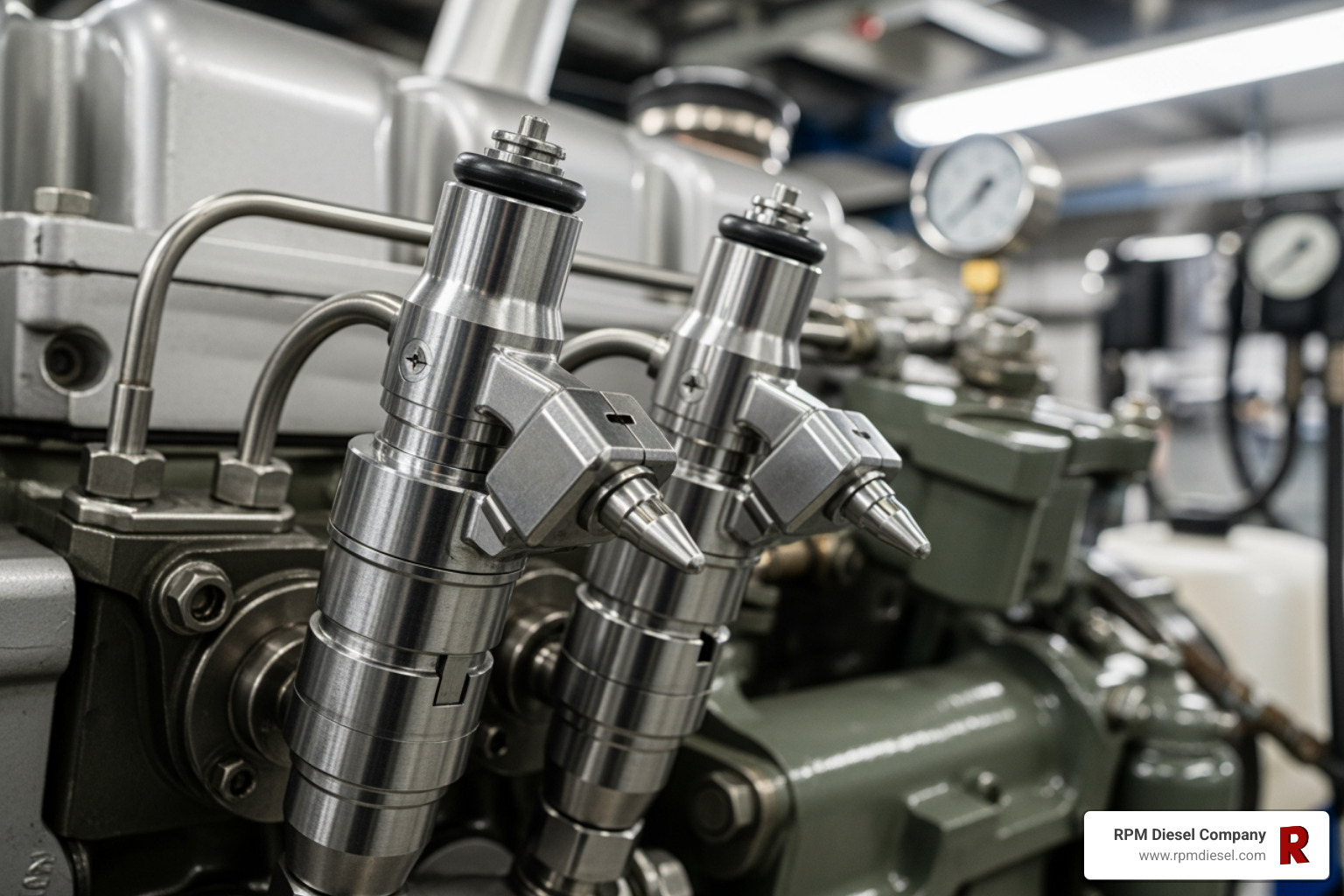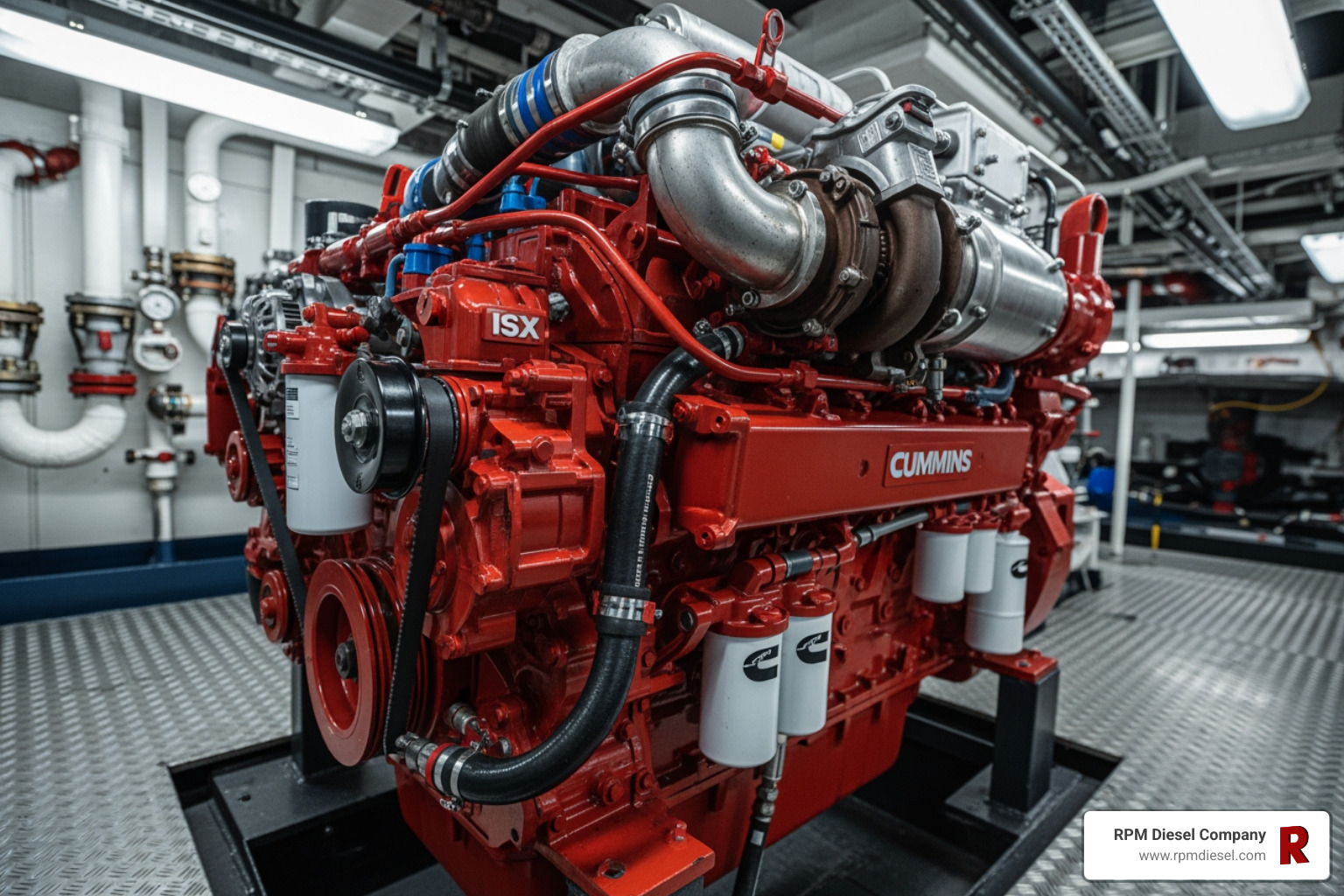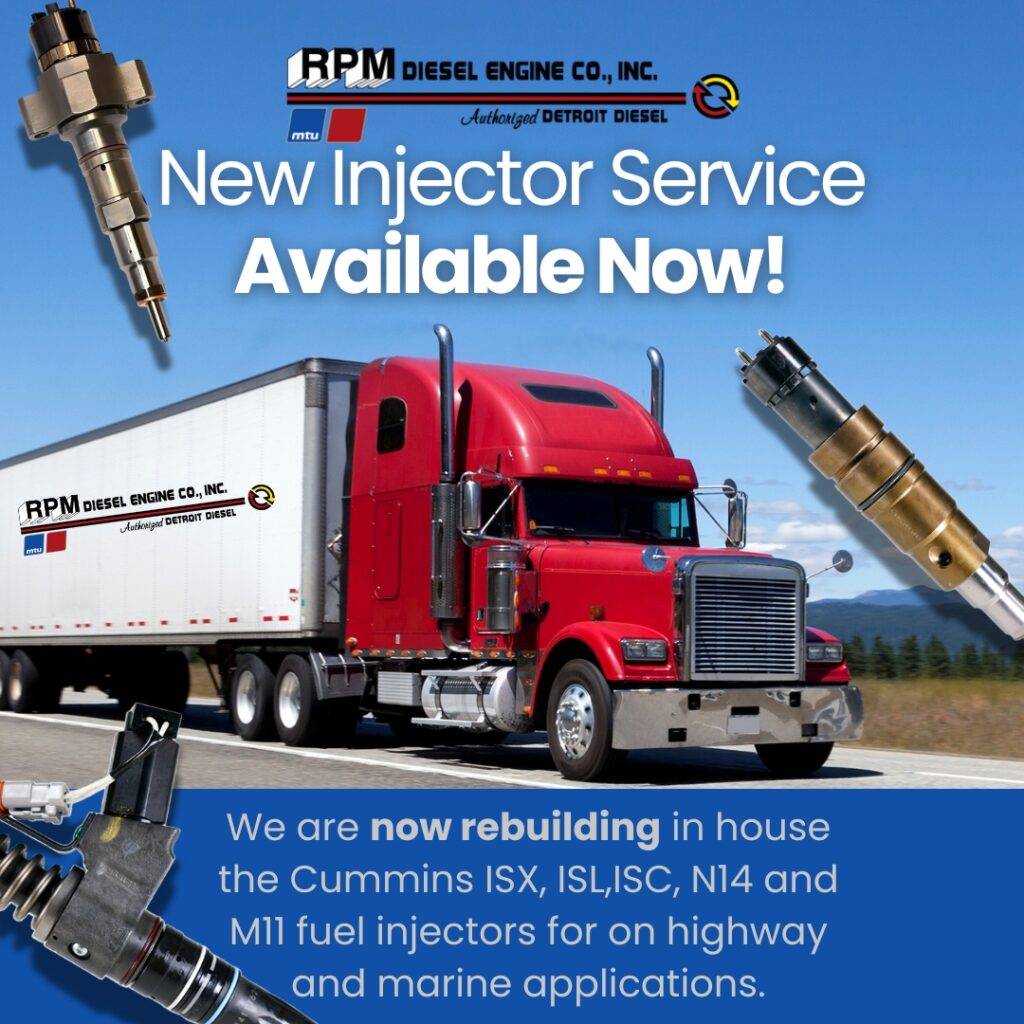Diesel injector troubleshooting is crucial for maintaining the performance of marine diesel engines. Diesel injectors are vital components that ensure your engine runs smoothly by delivering the necessary power and efficiency. However, when issues arise, they can lead to significant performance problems. Here’s a quick checklist to help you identify and address common diesel injector challenges:
- Reduced engine power
- Increased fuel consumption
- Engine knocking or rough idling
- Higher emissions and smoke
Diesel engines are renowned for their durability and efficiency, especially in marine applications. Fuel injectors are a key part of this system, responsible for atomizing fuel into the combustion chamber. Any failure or malfunction in these injectors can cause performance issues, leading to costly repairs and increased downtime.
Marine vessel owners rely on their engines for smooth sailing. Knowing the importance of timely diesel injector troubleshooting can make all the difference. By identifying the signs of injector issues early and understanding the common causes, vessel owners can ensure their marine engines operate efficiently.

Common Causes of Diesel Injector Failure
Diesel injectors are the heart of marine engines, ensuring they run efficiently and reliably. However, like any mechanical component, they can suffer from various issues. Let’s explore the common causes of diesel injector failure and how they can affect your marine engine’s performance.
Contaminated Fuel
Contaminated fuel is a leading cause of diesel injector failure. Impurities such as dirt, water, and microscopic debris can enter the fuel system and cause blockages. These impurities lead to reduced performance and eventual injector failure.
Tip: Regularly use high-quality fuel filters and source fuel from reputable suppliers to minimize contamination risks.
Poor-Quality Fuel
Using low-quality or improperly refined diesel fuel can also spell trouble for your injectors. Such fuel often contains harmful impurities that can accelerate wear and clog the injectors.
Tip: Always opt for high-grade diesel fuel to safeguard your injectors and ensure optimal engine performance.
Wear and Tear
Diesel injectors are complex mechanical devices with many moving parts. Over time, the high pressures and temperatures they endure can lead to wear and tear. Components like O-rings, seals, and springs can deteriorate, affecting the injector’s ability to deliver fuel accurately.
Tip: Schedule regular inspections and replace worn components to prevent failures due to wear and tear.
Overheating
Excessive heat is detrimental to diesel injectors. Prolonged exposure to high temperatures, whether from engine overheating or inadequate cooling, can warp or crack injector components.
Tip: Maintain your engine’s cooling system by regularly checking the radiator and coolant levels to prevent overheating-related failures.

Understanding these common causes of diesel injector failure is crucial for marine vessel owners. By addressing issues like contaminated fuel, poor-quality fuel, wear and tear, and overheating, you can keep your engine running smoothly and avoid costly repairs.
Next, let’s explore the symptoms that indicate diesel injector problems and how to identify them early.
Symptoms of Diesel Injector Problems
Recognizing the symptoms of diesel injector issues is key to maintaining your marine engine’s health. Let’s explore some common warning signs that your diesel injectors might be in trouble.
Poor Engine Performance
When diesel injectors malfunction, one of the first things you’ll notice is a drop in engine performance. Your vessel may struggle to reach its usual speed, feel sluggish, or have difficulty maintaining consistent power. This can make maneuvering your boat challenging, especially in rough waters.
Increased Fuel Consumption
A faulty injector can disrupt the precise fuel-air mixture needed for efficient combustion. This imbalance often results in increased fuel consumption, which can be both costly and inconvenient for long voyages. If you find yourself refueling more often than usual, it might be time to inspect those injectors.
Difficulty Starting
Trouble starting your engine is another red flag. If your marine engine takes longer to start or requires multiple attempts, weak or failing injectors could be the culprit. This issue can lead to frustrating delays, especially when you’re eager to set sail.
Engine Misfires
Engine misfires occur when one or more cylinders fail to ignite properly due to inadequate fuel delivery. This can cause your boat to vibrate, sputter, or even stall. Misfires not only affect performance but can also lead to further engine damage if left unaddressed.
Smoke and Increased Emissions
Excessive smoke from the exhaust is a telltale sign of injector problems. If your boat’s exhaust emits black, white, or blue-ish smoke, it’s often due to incomplete combustion caused by faulty injectors. This not only impacts performance but also increases your vessel’s environmental footprint.

By keeping an eye out for these symptoms, you can catch diesel injector issues early and prevent more severe problems down the line. In the next section, we’ll dive into diesel injector troubleshooting techniques to help you address these issues effectively.
Diesel Injector Troubleshooting Techniques
When your marine engine isn’t running smoothly, diesel injector troubleshooting is essential. Let’s explore some effective techniques to identify and solve injector issues.
Visual Inspection
Start with a simple visual inspection. Open the engine compartment and look at the injectors and surrounding components. Check for leaks, corrosion, or physical damage. A clean and intact injector is crucial for optimal performance. Also, inspect the fuel filters. Clogged filters can mimic injector problems and even cause them over time.
Listen to Your Engine
Your engine’s sound can tell you a lot. A healthy engine purrs smoothly. If you hear unusual noises like clicking or knocking, it might be a sign of injector trouble. Use a long screwdriver as a stethoscope—place the metal end on the injector and listen through the handle. A consistent clicking sound is normal; silence or irregular noise indicates a problem.
Fuel System Test
Testing the fuel system is key to pinpointing injector issues. Measure fuel pressure and flow rates to ensure they’re within the recommended range. Check the injector spray patterns and fuel volume. These tests can reveal if an injector is clogged or malfunctioning.
Computer Diagnostics
For complex issues, computer diagnostics can be a lifesaver. Use a scan tool to check for diagnostic trouble codes (DTCs) related to the fuel system. These codes can guide you to specific injector problems or other related issues. If you’re not comfortable with this step, consider consulting a professional.
By employing these diesel injector troubleshooting techniques, you can keep your marine engine in top shape. Regular maintenance and timely interventions are crucial to avoid costly repairs and ensure smooth sailing. In the next section, we’ll explore how to test diesel injectors effectively.
How to Test Diesel Injectors
Testing diesel injectors is crucial for maintaining your marine engine’s performance. Here are some effective methods to identify faulty injectors.
Sound/Vibration Test
A simple way to check your injectors is by using a sound/vibration test. First, ensure your engine is running. Then, place the metal end of a long screwdriver on an injector and listen through the handle. A healthy injector will produce a consistent clicking sound. If you hear silence or irregular noise, that injector might be faulty.
Testing with a Test Light
A test light is a handy tool for checking injector functionality. Start by turning on the ignition without starting the engine. Attach one alligator clip to the battery’s negative terminal. Locate the injector’s wire that carries a constant 12V supply and plug the test light into this wire. If the light glows, the injector is functioning. Repeat this for all injectors.
Checking ECM Output
The Electronic Control Module (ECM) plays a vital role in injector performance. With the engine running, connect the test light to the positive battery terminal. Then, attach the clip to the ECM signal wire on the injector. Throttle the engine and watch for a flashing light. If there’s no flash, the injector might be faulty.
Professional Assessment
For a comprehensive analysis, consider a professional assessment. At RPM Diesel Company, we use state-of-the-art equipment to perform various tests, including:
- Leak Test
- Fuel Spray Pattern Test
- Flow Rate Measurement
- Response Time of Injectors
- Electronic Functionality
These tests help pinpoint specific issues, allowing for precise repairs or replacements.
By understanding how to test diesel injectors, you can keep your marine engine running smoothly. Up next, we’ll answer some frequently asked questions about diesel injector troubleshooting.
Frequently Asked Questions about Diesel Injector Troubleshooting
How can you tell if a diesel injector is bad?
Identifying a faulty diesel injector often begins with fuel contamination. Contaminants like dirt and water can clog injectors, leading to poor engine performance. A telltale sign of a bad injector is irregular engine noise or misfires.
Debris and sealing surfaces are also major culprits. Debris can damage the injector’s delicate sealing surfaces, causing leaks and reduced efficiency. Regular inspections can help spot these issues early.
What is the most common cause of diesel injector failure?
The leading cause of diesel injector failure is fuel contamination. Impurities in the fuel can lead to clogs and wear on the injector components. This is why proper filtration is crucial. Using high-quality filters can significantly reduce the risk of contamination.
Another factor is the condition of the sealing surfaces. Over time, these surfaces can wear out, leading to leaks and injector failure. Regular maintenance and inspections can help prevent such issues.
How do I test a diesel injector?
Testing a diesel injector involves several steps to ensure it functions correctly. One method is using a fuel injector cleaner. This helps remove any build-up that might be affecting performance.
Checking the spray patterns is another crucial step. A consistent and fine mist indicates a healthy injector, while uneven patterns suggest problems.
Finally, measure the flow rates. This ensures that each injector delivers the right amount of fuel. Variations in flow rates can lead to engine performance issues.
By addressing these common questions, you can better understand and troubleshoot diesel injectors. Regular checks and maintenance are key to keeping your marine engine running smoothly.
Conclusion
Regular maintenance is the cornerstone of keeping your marine diesel engine in peak condition. Diesel injector troubleshooting plays a vital role in ensuring your engine runs smoothly and efficiently. By staying vigilant about potential issues like fuel contamination and wear and tear, you can prevent many common problems before they escalate.
At RPM Diesel Company, we specialize in comprehensive marine diesel services. Our team is dedicated to helping you maintain your engine’s longevity and performance. We understand the intricacies of diesel injectors and offer expert services to keep your engine running at its best.
Routine checks, such as visual inspections and listening for unusual engine sounds, can help you catch issues early. Advanced diagnostics and professional assessments can provide deeper insights into your engine’s health.
By prioritizing regular maintenance and addressing issues promptly, you can extend the life of your diesel engine and avoid costly repairs. Trust our expertise at RPM Diesel Company to support your marine engine needs. Visit our Diesel Injector Repairs page to learn more about our services and how we can help keep your engine in top shape.






